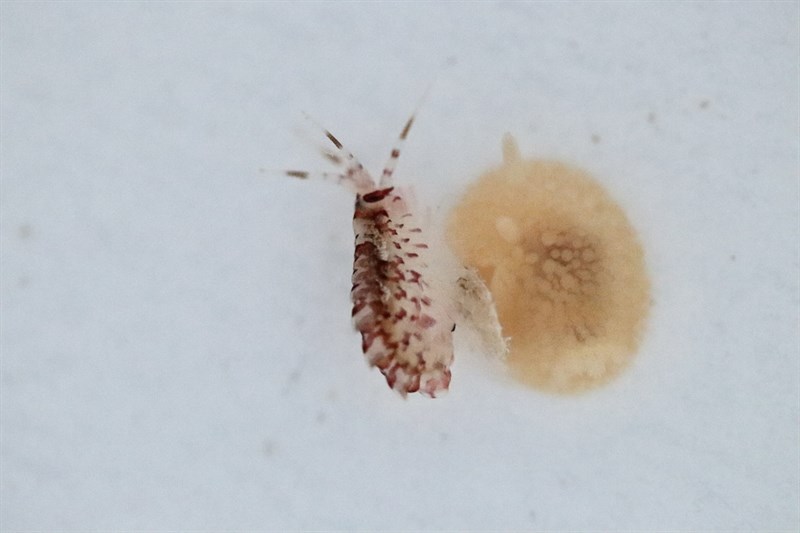Eusirus cuspidatus is a species of amphipod crustacean belonging to the family Eusiridae. These small, shrimp-like creatures are found in a variety of marine environments worldwide.
Description & Characteristics
Eusirus cuspidatus is characterized by its elongated body shape and its distinctive, pointed rostrum, a beak-like projection on the head. This species is typically small, reaching a maximum size of around 10-15 millimeters. Its body is segmented and covered in a hard exoskeleton. It has seven pairs of legs, which are used for walking and swimming, as well as a pair of antennae that are used for sensing the environment.
Habitat and Occurrence
Eusirus cuspidatus is a widespread species, inhabiting various marine environments including coastal waters, the open ocean, and even the deep sea. It is commonly found in the epipelagic zone, the uppermost layer of the ocean where sunlight penetrates, and the mesopelagic zone, which lies beneath the epipelagic and experiences dim light. These amphipods are known to associate with benthic habitats, the seafloor, especially in shallower depths.
Taxonomy
Eusirus cuspidatus is classified within the Class Malacostraca, the largest group of crustaceans. This class includes a wide array of diverse species, including crabs, lobsters, shrimps, and krill. Within Malacostraca, Eusirus cuspidatus belongs to the Order Amphipoda, a group of mostly small, laterally flattened crustaceans with prominent antennae and legs adapted for swimming and crawling. Amphipods are a highly diverse group, with over 10,000 known species. Eusirus cuspidatus is further classified under the Family Eusiridae, a family of amphipods that are typically found in marine environments.
Feeding
Eusirus cuspidatus is an omnivorous species, meaning it feeds on both plant and animal matter. Its diet consists primarily of small invertebrates, algae, and detritus, the decaying organic matter found on the seafloor. Its feeding habits play a significant role in the marine ecosystem, helping to break down organic matter and contributing to the food chain.

Image References